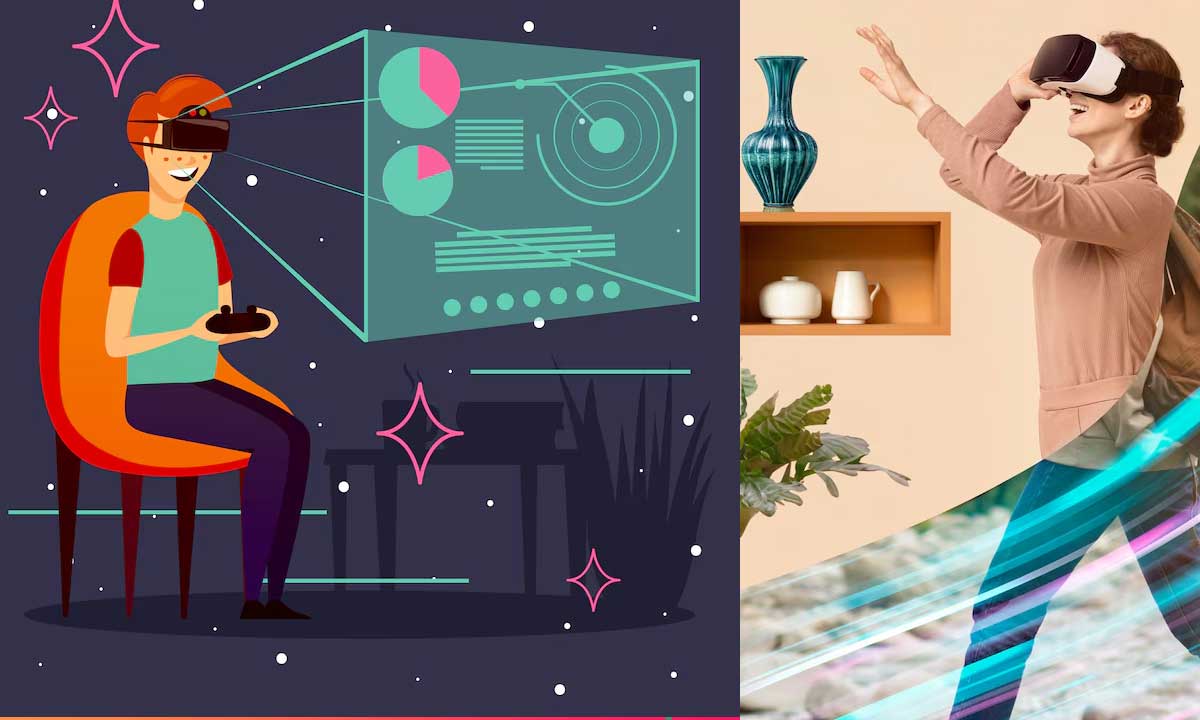Synthetic Senses in Gaming: Ushering in a New Era of Immersion
Gaming has transcended its humble beginnings of pixelated graphics and rudimentary sound effects. Today, it stands at the cusp of a sensory revolution, where synthetic senses—touch, sound, smell, and sight—are meticulously crafted to blur the lines between virtual and reality. This comprehensive exploration delves into how these synthetic senses are redefining the gaming landscape, offering players an unprecedented level of immersion.
1. The Evolution of Gaming: From Pixels to Sensory Realism
The journey of gaming has been marked by continuous innovation. From the 8-bit era to the high-definition visuals of today, each leap has brought players closer to lifelike experiences. However, the current paradigm shift is not just about better graphics or faster processors; it’s about engaging all human senses to create a holistic gaming experience.
2. Haptic Feedback: Feeling the Virtual World
Understanding Haptic Technology
Haptic feedback introduces the sense of touch into gaming. Devices like the PlayStation 5’s DualSense controller employ adaptive triggers and nuanced vibrations to simulate textures and resistance, making actions like drawing a bowstring or driving over rough terrain feel tangible.
Advanced Haptic Gear
Beyond controllers, haptic suits and gloves, such as the Teslasuit and bHaptics TactSuit, offer full-body feedback. These wearables can simulate a range of sensations—from the impact of a punch to the sensation of rain—by delivering precise vibrations or electrical stimulations to specific body parts.
Applications in Gaming
In action games, haptic feedback can convey the recoil of firearms or the tension of a stealth movement. In horror genres, subtle vibrations can heighten suspense, making every creak or distant sound more ominous.
3. Spatial Audio: Surround Sound Reimagined
The Science of Spatial Audio
Spatial audio technology creates a 3D soundscape, allowing players to perceive sound direction and distance accurately. Unlike traditional stereo sound, spatial audio adjusts dynamically based on the player’s orientation and position within the game world.
Enhancing Gameplay
In competitive multiplayer games, spatial audio provides a tactical advantage. Players can detect enemy movements or gunfire direction, enabling quicker reactions. In narrative-driven games, it enriches storytelling by immersing players in the environment, making dialogues and ambient sounds more lifelike.
Technological Implementations
Headsets like the Sony Pulse 3D and software solutions such as Dolby Atmos and DTS:X are at the forefront of delivering spatial audio experiences, ensuring compatibility across various gaming platforms.
4. Olfactory Integration: The Scent of Virtual Realities
Pioneering Scent Technology
Smell, a powerful trigger for memory and emotion, is being integrated into gaming through devices like OVR Technology’s ION. This wearable device emits precise scents synchronized with in-game events, enhancing immersion.
Practical Applications
In survival games, the scent of smoke can indicate nearby danger, while in exploration games, the aroma of flowers or ocean breeze can enrich the environment. This multisensory approach deepens emotional connections and situational awareness.
Challenges and Considerations
Implementing scent technology faces hurdles, including the complexity of scent replication, potential for sensory overload, and ensuring user comfort. Moreover, the subjective nature of smell perception requires careful calibration to avoid adverse reactions.
5. Visual Fidelity: The Role of Ray Tracing and 4K Resolution
Advancements in Graphics
Ray tracing simulates the physical behavior of light, producing realistic shadows, reflections, and refractions. When combined with 4K resolution, it delivers unparalleled visual clarity and depth, making game worlds more convincing.
Impact on Immersion
Enhanced visuals contribute significantly to immersion. In games like “Cyberpunk 2077,” ray tracing brings neon-lit streets to life, while in “Minecraft,” it transforms blocky landscapes into visually stunning environments.
Hardware Considerations
High-fidelity graphics demand powerful hardware. GPUs like NVIDIA’s RTX series are designed to handle the computational load of ray tracing and high-resolution rendering, ensuring smooth gameplay without compromising visual quality.
6. Integrating Synthetic Senses: A Cohesive Experience
Synergy of Senses
The true potential of synthetic senses lies in their integration. When haptic feedback, spatial audio, olfactory cues, and high-definition visuals work in harmony, they create a cohesive and immersive experience that engages players on multiple sensory levels.
Case Study: Virtual Reality (VR) Environments
In VR, the combination of these technologies is particularly impactful. For instance, in a VR survival game, players can feel the tension in their muscles (haptic), hear the rustling leaves behind them (spatial audio), smell the damp earth (olfactory), and see the detailed foliage (visual), creating a fully immersive scenario.
7. Broader Implications and Future Prospects
Beyond Entertainment
Synthetic senses have applications beyond gaming. In education, they can simulate real-life scenarios for training purposes. In therapy, they can create controlled environments for exposure therapy or relaxation. In social platforms, they can enhance virtual interactions, making them more personal and engaging.
Future Developments
As technology advances, we can anticipate more compact, affordable, and user-friendly sensory devices. AI integration could allow for adaptive sensory feedback, tailoring experiences to individual preferences and reactions in real-time.
Ethical and Accessibility Considerations
With increased immersion comes the responsibility to consider the psychological impact on players. Developers must ensure content remains appropriate and that sensory experiences do not cause discomfort or harm. Additionally, making these technologies accessible to individuals with disabilities is crucial for inclusive gaming.
Conclusion
The integration of synthetic senses marks a transformative era in gaming, elevating it from a visual and auditory medium to a multisensory experience. By engaging touch, sound, smell, and sight, games can offer deeper immersion, emotional resonance, and realism. As these technologies continue to evolve, they hold the promise of not only revolutionizing entertainment but also enriching various aspects of human interaction and learning.
You may like this also:

